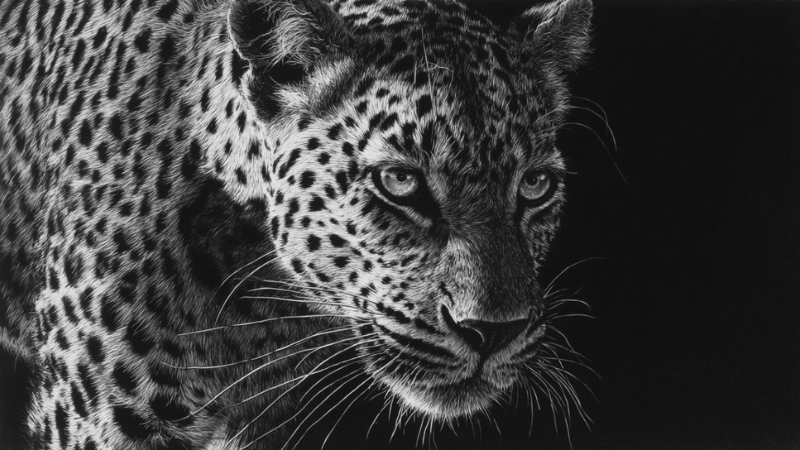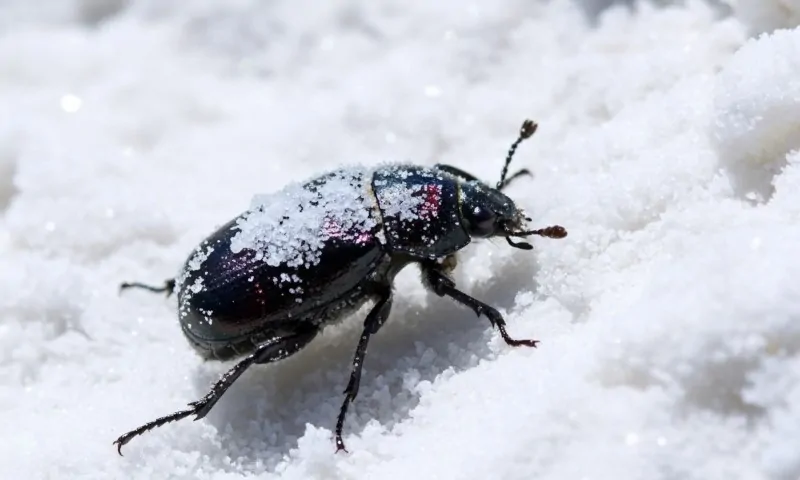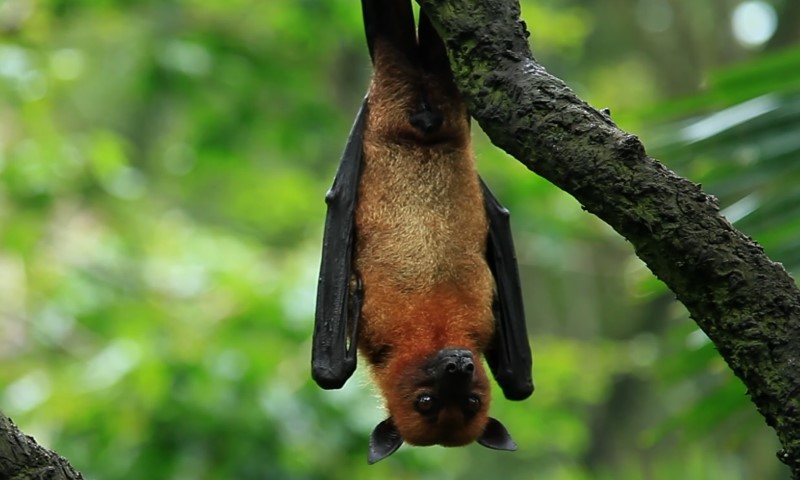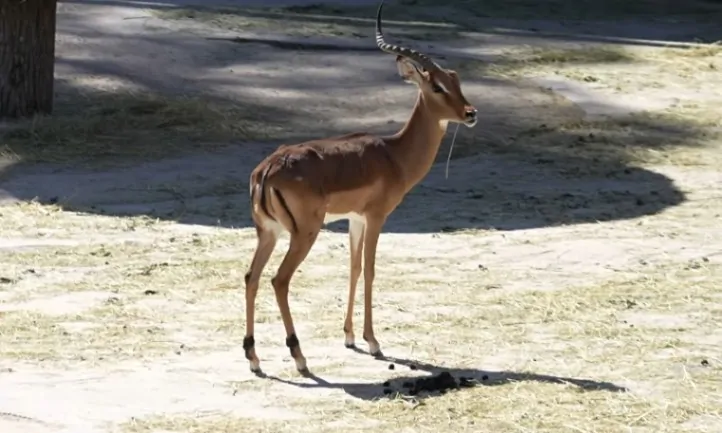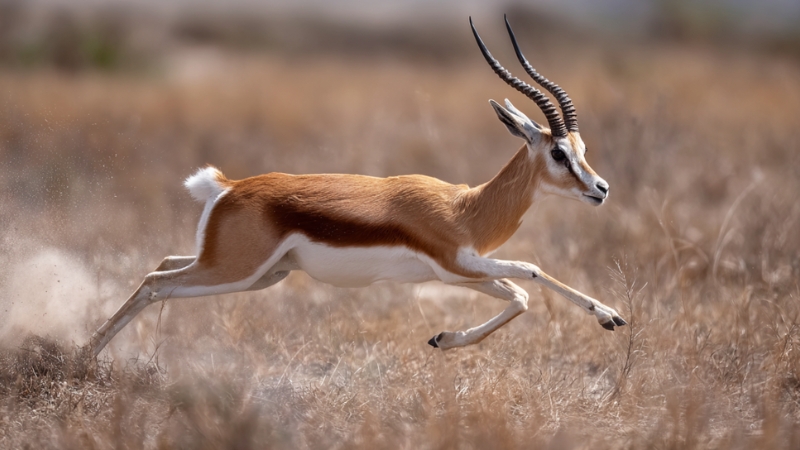Leopards sit high on the African food chain, sleek, powerful, and intelligent hunters that can kill prey twice their size. But even apex predators are not untouchable. In the wild, something always eats something else, and leopards, despite their strength and stealth, do face natural enemies.
While adult leopards are rarely killed for food, they can be ambushed, scavenged, or displaced by other large carnivores competing for territory or carcasses.
Cubs, however, are far more vulnerable a are frequently targeted by lions, hyenas, and even eagles.
Let’s explore the five surprising predators and rivals that can overpower, kill, or consume a leopard, and why these encounters happen more often than people think.
1. Lions – The Leopard’s Biggest Threat
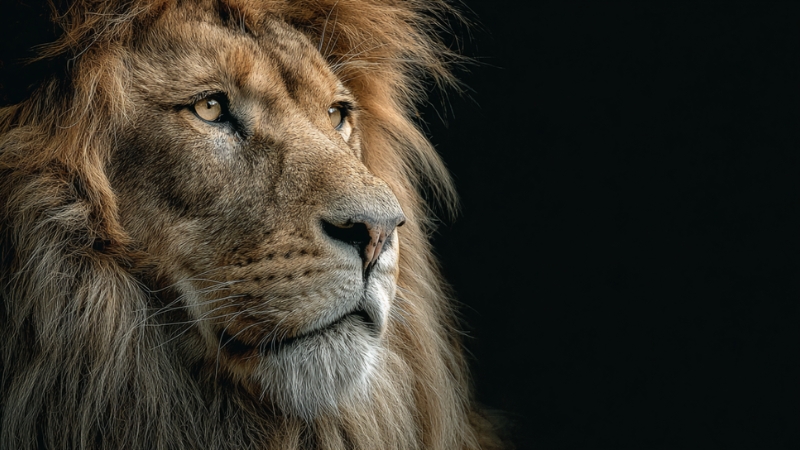
In Africa, lions are the dominant predators in nearly every ecosystem they share with leopards. A single adult male lion can weigh up to 250 kg (550 lb), nearly three times the weight of an adult male leopard. This size advantage makes confrontation a death sentence for leopards.
However, lions rarely hunt leopards for food. Instead, the relationship is defined by competition and territory. Lions kill leopards to eliminate rivals and reduce competition for prey.
Key Facts:
| Trait | Lion | Leopard |
| Average Weight | 150–250 kg | 50–90 kg |
| Strength | Extremely high | High (but stealth-focused) |
| Motivation for Killing | Territory, competition | Defense, survival |
| Frequency of Conflict | Common in overlapping ranges | Avoids direct contact |
Lions often track leopards by scent. If a lion pride encounters a leopard near a recent kill, they’ll chase it up a tree, steal the carcass, and sometimes kill the leopard outright.
Female leopards with cubs face an even higher risk; lions are responsible for up to 40% of leopard cub deaths in certain regions of the Kruger National Park.
2. Hyenas – Opportunistic Killers and Scavengers
The spotted hyena is not just a scavenger; it’s an intelligent and coordinated hunter capable of overpowering solitary big cats. A single hyena is rarely a match for a leopard, but a clan of 5–10 can easily outnumber and exhaust one.
Hyenas don’t typically hunt leopards for food, but they will:
- Steal fresh kills
- Harass the leopards until they abandon their prey
- Attack and kill leopard cubs when unprotected
Leopards try to counter this by dragging kills up trees, beyond hyena reach. However, hyenas have learned to wait below feeding trees until the carcass drops or rots enough to fall.
In parts of Tanzania’s Serengeti, scientists observed hyenas stealing over 50% of leopard kills in shared territories.
Behavioral Comparison:
| Behavior | Leopard | Spotted Hyena |
| Social Structure | Solitary | Group (clan of up to 80) |
| Primary Defense | Climbing, stealth | Numbers, endurance |
| Conflict Outcome | Wins solo fights | Wins group attacks |
| Main Threat | Cubs and scavenging losses | Direct attack risk is moderate |
So while hyenas rarely eat adult leopards, they certainly cause starvation or displacement, the indirect killers of many solitary cats.
3. Nile Crocodiles – The Ambush Predators of Waterholes
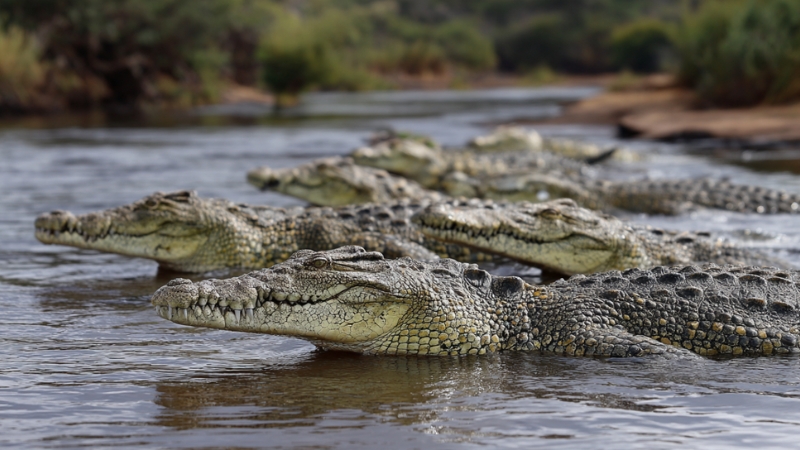
In regions like the Okavango Delta, Nile crocodiles pose a serious threat to leopards, especially when they come to drink or cross rivers. Crocodiles are stealth ambush predators, striking from below with lightning speed.
Leopards are surprisingly strong swimmers, but even they are no match for a 4–5 meter crocodile weighing 600–1000 kg. Crocodiles have been observed killing not only leopards but also lions and buffalo.
Typical Scenario: A leopard crouches to drink. Beneath the surface, a crocodile senses vibration and lunges upward. With a bite force exceeding 22,000 newtons, it clamps onto the leopard’s neck or torso and pulls it underwater. Death comes within seconds.
Quick Comparison:
| Factor | Leopard | Nile Crocodile |
| Habitat Overlap | Water edges | Water edges |
| Max Weight | 90 kg | 1000 kg |
| Bite Force | 1,000 psi | 3,200 psi |
| Typical Outcome | Fatal for the leopard | Predator advantage |
Crocodiles consume the leopard afterward, often stashing the body under submerged vegetation to tenderize it for later feeding. These incidents are rare but well-documented in riverine ecosystems across Botswana, Zambia, and Kenya.
4. Other Leopards – Territorial Battles Turn Deadly
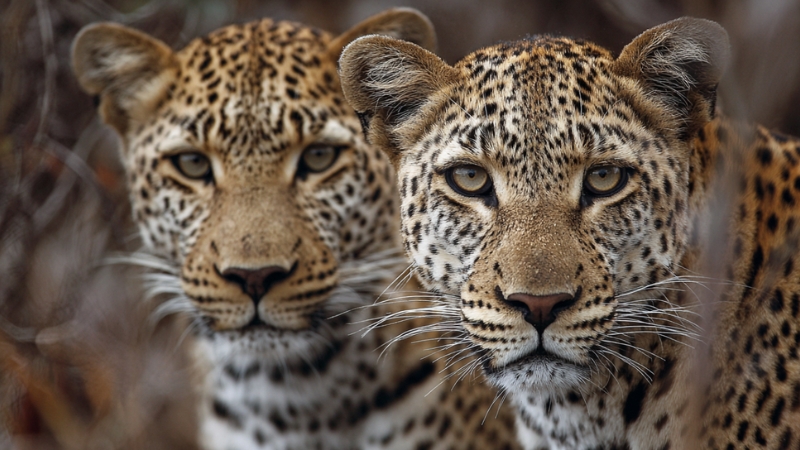
It may sound surprising, but one of the leopard’s most common killers is another leopard. These cats are fiercely territorial, and conflicts between adults, particularly males, can be brutal.
When two males’ territories overlap, fights erupt over dominance, mates, and resources. These clashes can lead to severe injuries, and in about 15–20% of cases, death.
Male leopards have also been known to kill cubs sired by rivals, a behavior known as infanticide, to bring females back into estrus sooner.
Intra-Species Conflict Data (from Kruger & Tsavo Observations):
| Cause | Percentage of Leopard Deaths |
| Lion Predation | 38% |
| Hyena Conflict | 21% |
| Other Leopards | 16% |
| Human Poaching | 13% |
| Crocodile Attack | 5% |
| Others (eagles, accidents, disease) | 7% |
These statistics show that leopards are often their own biggest enemies; competition and infanticide are critical population controls in dense habitats.
5. Humans – The Apex Predator Above All
No predator threatens leopards more than humans. While natural enemies may kill individual leopards, humans have reduced leopard populations globally by over 60% in the last century, through hunting, habitat loss, and retaliatory killings.
In parts of sub-Saharan Africa and Asia, leopards are hunted for:
- Their pelts (fashion and trade)
- Bones (traditional medicine)
- Trophy hunting (sport)
- Livestock protection (retaliation killings)
Deforestation also fragments their range, forcing leopards into closer proximity with people, leading to more conflicts. In some Indian states, leopards enter villages nightly to hunt livestock, leading to lethal control measures.
Human Impact Overview:
| Type of Threat | Description | Effect on Population |
| Poaching | Pelt, bone, and trophy trade | Severe |
| Habitat Loss | Expansion of farms and towns | Severe |
| Retaliation | Killing after livestock predation | Moderate to High |
| Vehicle Collisions | Expanding road networks | Moderate |
While lions, hyenas, and crocodiles take a few leopards each year, humans are responsible for thousands of leopard deaths annually, making us the most dangerous predator they face.
Bonus: Eagles and Snakes Prey on Leopard Cubs
For leopard cubs, the world is full of dangers. The martial eagle, Africa’s largest bird of prey, has been known to snatch cubs under 5 kg from open nests or grass hides. Similarly, African rock pythons can ambush young leopards, especially when mothers leave to hunt.
Leopard mothers combat this by frequently moving their cubs, every 2–5 days, to avoid scent buildup that attracts predators.
The Survival Strategy of a Leopard
Leopards survive not because they’re the strongest, but because they’re adaptable. They’ve learned to live in forests, deserts, and even city outskirts, adjusting to every predator and every human intrusion.
Their strategies include:
- Hunting at night when lions sleep
- Caching food in trees
- Avoiding direct conflict by staying silent and hidden
This adaptability explains why leopards remain the most widespread big cat species in the world, surviving in over 35 countries across Africa and Asia, a rare feat in a predator-filled ecosystem.
Final Thoughts
Pictured here is a stunning leopard. 🐆#DidYouKnow: Leopards climb up on trees and tend to go after a different prey which isn’t being pursued by tigers, lions or other competent predators because they face the threat of being hunted by these predators as well! pic.twitter.com/4oMf2yt6KZ
— Nat Geo India (@NatGeoIndia) March 29, 2023
While few animals actively hunt leopards, nature’s balance ensures even top predators face risks. Lions and crocodiles dominate them physically, hyenas challenge them socially, and humans threaten their very survival.
Even cheetahs, though lighter and faster, compete with leopards for prey, forcing both to rely on stealth and timing rather than strength.
The leopard’s strength lies not in invincibility but in resilience, its ability to disappear, outthink, and outlast. In ecosystems ruled by tooth and claw, that’s what keeps it alive, and why, despite being hunted by kings and poachers alike, the leopard still prowls silently through Africa’s night.

